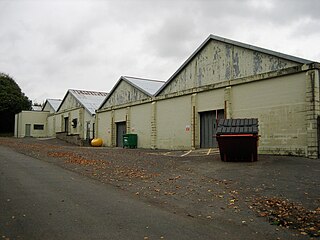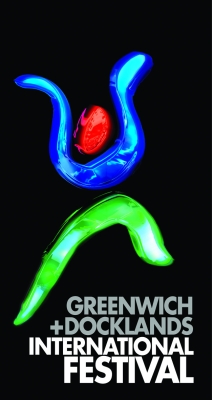
Stonehenge is a prehistoric monument on Salisbury Plain in Wiltshire, England, two miles (3 km) west of Amesbury. It consists of an outer ring of vertical sarsen standing stones, each around 13 feet (4.0 m) high, seven feet (2.1 m) wide, and weighing around 25 tons, topped by connecting horizontal lintel stones. Inside is a ring of smaller bluestones. Inside these are free-standing trilithons, two bulkier vertical sarsens joined by one lintel. The whole monument, now ruinous, is aligned towards the sunrise on the summer solstice. The stones are set within earthworks in the middle of the densest complex of Neolithic and Bronze Age monuments in England, including several hundred tumuli.

Amesbury is a town and civil parish in Wiltshire, England. It is known for the prehistoric monument of Stonehenge which is within the parish. The town is claimed to be the oldest occupied settlement in Great Britain, having been first settled around 8820 BC. The parish includes the hamlets of Ratfyn and West Amesbury, and part of Boscombe Down military airfield.

The Byron Bay Bluesfest, formerly the East Coast International Blues & Roots Music Festival, is an annual Australian music festival that has been held over the Easter long weekend in the Byron Bay, New South Wales, area since 1990. The festival features a large selection of blues and roots performers from Australia and around the world and is one of the world's leading contemporary music festivals.

Singapore International Festival of Arts (SIFA) is an annual arts festival held in Singapore. It is organised by Arts House Limited for the National Arts Council. The festival is usually held in mid-year for a stretch of one month and incorporates theatre arts, dance, music and visual arts, etc. Besides local participants, many of the events are by international artists.

Larkhill is a garrison town in the civil parish of Durrington, Wiltshire, England. It lies about 1+3⁄4 miles (2.8 km) west of the centre of Durrington village and 1+1⁄2 mi (2.4 km) north of the prehistoric monument of Stonehenge. It is about 10 mi (16 km) north of Salisbury.
This is a list of Stonehenge replicas and derivatives that seeks to collect all the non-ephemeral examples together. The fame of the prehistoric monument of Stonehenge in England has led to many efforts to recreate it, using a variety of different materials, around the world. Some have been carefully built as astronomically aligned models whilst others have been examples of artistic expression or tourist attractions.

Perth Festival, named Perth International Arts Festival (PIAF) between 2000 and 2017, and sometimes referred to as the Festival of Perth, is Australia's longest-running cultural festival, held annually in Western Australia. The program features contemporary and classical music, dance, theatre, performance, literature and ideas, visual arts, large-scale public works. The main events of the festival take place every year, from February to March and the film program now known as Lotterywest Films runs from November to April, as part of the Perth Festival.
The Dublin Theatre Festival is Europe's oldest specialised theatre festival. It was founded by theatre impresario Brendan Smith in 1957 and has, with the exception of two years, produced a season of international and Irish theatre each autumn. It is one of a number of key post-World War II events established to foster tolerance and cultural understanding between nations. Over the past five decades, the festival has become a crucial part of Ireland's cultural landscape.

Formerly known as Auckland Festival, Auckland Arts Festival or Te Ahurei Toi o Tāmaki Makaurau is an annual arts and cultural festival held in Auckland, New Zealand. The Festival features works from New Zealand, the Pacific, Asia and beyond, including world premieres of new works and international performing arts events.

Arthur Uther Pendragon is a British eco-campaigner, Neo-Druid leader, media personality, and self-declared reincarnation of King Arthur, a name by which he is also known. Pendragon was the "battle chieftain" of the Council of British Druid Orders.

The Salisbury Museum is a museum in Salisbury, Wiltshire, England. It houses one of the best collections relating to Stonehenge and local archaeology.

Berwick Film & Media Arts Festival (BFMAF) is an annual festival with a focus on new cinema and artists' moving image. The festival programme takes place across Berwick-upon-Tweed in the North East of England, UK and includes exhibitions, film screenings, live events, school screenings and family activities.

The Greenwich+Docklands International Festival (GDIF) is a free annual outdoor performing arts festival, which takes place across East and South East London (Greenwich) every summer. GDIF was founded by its Artistic Director Bradley Hemmings as an independent festival in 1996 and is produced by the charitable organisation Greenwich+Docklands Festivals (GDF). The festival organises over 200 performances during 10 days, which are attended by over 80,000 people each year.

Salisbury Arts Centre is a venue in Salisbury, Wiltshire, England. It is run by Wiltshire Creative, a charity which provides opportunities for members of the community to experience the arts.

The Dunedin Fringe Festival, or Dunedin Fringe, is an 11-day fringe arts festival held each March in Dunedin, New Zealand. Initiated in the year 2000, Dunedin Fringe aims to bring experimental contemporary art to a wider audience and to support the work of emerging artists, attracting artists from throughout New Zealand and overseas.

CubaDupa is New Zealand's largest outdoor arts and music festival, celebrating the unique character of Cuba Street, Wellington. CubaDupa describes itself as "a creative playground blurring the lines between audience & performer." It attracts up to 100,000 people. The festival is managed and produced by the non-profit Creative Capital Arts Trust. It is held each year over a weekend in late March. The festival features a dozen music stages, parade groups, street theatre performances, visual art installations, and food and beverage vendors. Some central city streets are closed with Cuba Street in the centre, creating a large pedestrian festival zone. Many artists participate in the CubaDupa programme, including acts from all over the world. In 2023, over 1,200 artists were signed up to perform, in 41 different venues around the city centre.
AotearoaNew Zealand Festival is a multi-arts biennial festival based in Wellington New Zealand that started in 1986. Previous names are the New Zealand International Festival of the Arts, New Zealand International Arts Festival, New Zealand Arts Festival and New Zealand Festival of the Arts. The festival is produced every two years and runs across three weeks in venues in Wellington City and outreach programmes in the region. The festival features both international and national acts from performing arts and music with a literary programme also.

Carla Marja Olga Van Zon is a New Zealand retired artistic director. She worked on international opportunities for New Zealand artists at Creative New Zealand, before becoming artistic director of the New Zealand International Festival of the Arts in Wellington in 1996. From 2013 she was the Artistic Director of the Auckland Arts Festival, where she was responsible for commissioning works such as the opera The Bone Feeders. Van Zon has been responsible for supporting the careers of many New Zealand artists. She retired from the Auckland Arts Festival in 2017, following a diagnosis of kidney disease in 2016.
The Modern Māori Quartet (MMQ) is a showband musical group from New Zealand. The group comprises core members James Tito, Matariki Whatarau, Maaka Pohatu and Francis Kora, with occasional rotation of the lineup depending on availability of the performers or to allow simultaneous tours. Founding member Matu Ngaropo shifted from performing to acting as the group's musical director/dramaturg. Other performers who had been part of the group include Rutene Spooner, Tainui Kuru and Jamie McCaskill.















